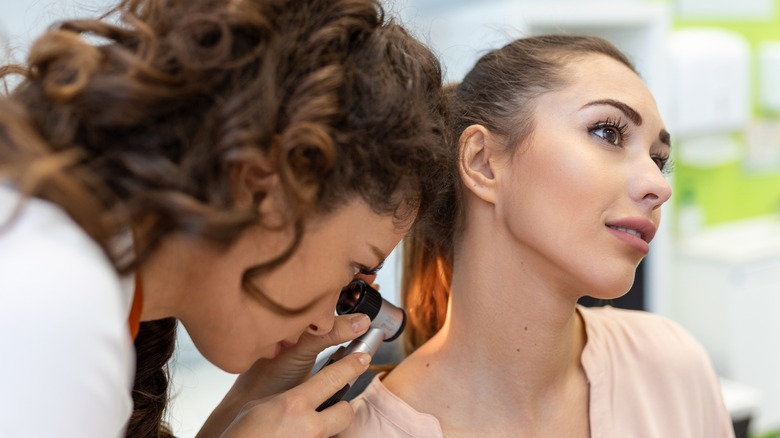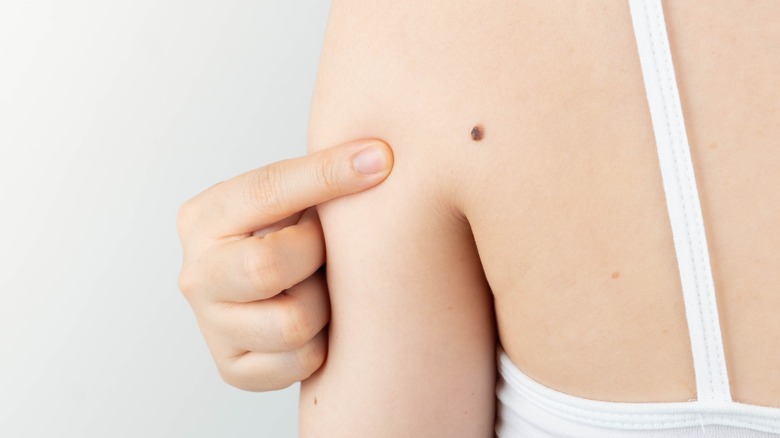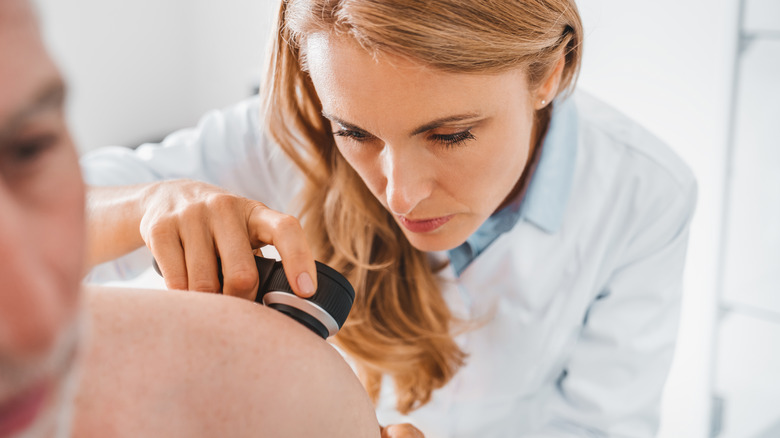Celebrity Dermatologist Lists 6 Signs Of Skin Cancer That You Shouldn't Ignore
A little fun in the sun is good for you and your mental health, which is why we feel happier during sunnier days compared to gloomy ones. While it can be very tempting to spend hours in the sunshine, the importance of sunscreen cannot be stressed enough.
We're grateful to the sun for giving us life and happiness, but spending too much time in the sun without sun protection is really bad for you. "We are exposed to ultraviolet and infrared light every day that produces free radicals in our skin," dermatologist Diane Madfes, MD told Byrdie. Dr. Madfes added that free radicals contribute to premature aging, and sunscreen can protect our skin.
Overexposure to the sun doesn't just age your skin but can also cause skin cancer. Therefore, the American Academy of Dermatology Association recommends that everyone over six months wear sunscreen with SPF 30 or higher that has broad-spectrum protection, protecting you from the harmful UV rays that cause aging and burning.
Though most people know it's essential to wear sunscreen, many neglect it to get a tan or feel lazy. However, skin cancer is the most common cancer in the country, where 20% of Americans will develop it by age 70, per the Skin Cancer Society. People of all ethnicities can get skin cancer, and it's crucial to use SPF daily and avoid overexposure to the sun. In an exclusive interview with The List, Dr. Karan Lal of Affiliated Dermatology tells us the six signs of skin cancer.
Don't neglect these 6 signs of potential skin cancer
Most people who know of skin cancer may not know how it looks as it can look different from one individual to another, per Skin Cancer Society.
The List spoke exclusively with Arizona-based Dr. Karan Lal; a double-board certified adult and pediatric dermatologist who is a diversity equity and inclusion committee member for the American Society of Dermatologic Surgery.
Dr. Lal told us, "[First is] asymmetry. If a spot cannot be cut in half and look the same on both sides, get it checked out. [Next,] borders, if you have a spot that has irregular or smudgy borders, it's time to see your board certified-dermatologist." The third is color, "Pink and brown make us frown. If you have a mole that has a pink hue, please circle it and get it evaluated," he added.
The fourth sign is the size. Dr. Lal said, "Anything with a diameter bigger than a pencil eraser that is new needs an assessment." And the fifth sign of skin cancer is evolution; if you notice any spot that is changing, bleeding, or painful — you'll want to see a dermatologist as well.
The final sign that could signify skin cancer resembles reality mogul Khloe Kardashian's recent health scare, a zit that won't go away. Dr. Lal said, "If you have a pimple that doesn't heal, or a dark line in your nail, or super crusty bump, please get it checked." If you notice any changes on your skin out of the ordinary, it's best to take preventative measures and see a professional.
There is more than one kind of skin cancer
The Skin Cancer Foundation recommends checking your skin once a month to see if there is anything "new, changing, or unusual" because early detection can help treat it and save your life. That being said, there are four main types of skin cancer: basal cell carcinoma, squamous cell carcinoma, melanoma, and Merkel cell carcinoma.
Basal cell carcinoma (BCC) primarily affects the areas of your body exposed to the sun. It is the most common skin cancer that affects about 3.6 million people a year in the country. Squamous cell carcinoma (SCC) is the second most common type of skin cancer, affecting about 1.8 million Americans annually. It often appears on areas exposed to the sun, and tanning can cause it too.
Melanoma is the third most common cancer and can look like moles or develop from them. Melanoma can appear on any part of the body irrespective of sun exposure, though the sun and UV tanning beds are the leading causes. About 197,700 melanoma cases are expected for 2022. Merkel cell carcinoma is the rarest (about 3,000) but most dangerous form of skin cancer, where you develop tumors on parts of the body exposed to the sun and is linked to the Merkel cell polyomavirus. It kills about 700 people a year.
The National Foundation for Cancer Research recommends using sunscreen, avoiding tanning beds, being aware of your risks, and getting regular screenings to prevent skin cancer.


